

SUUNTOブログ

Control your core body temperature and get better performance results
Your core body temperature can massively impact your performance. That’s why athletes pour water over themselves during races. They’re trying to cool down because they know once their core body temperature reaches a certain level, they’ll lose power and their performance will deteriorate. Like heart rate and power, core body temperature is a crucial metric for elite and recreational athletes alike.
A new partnership with Suunto and CORE gives the Suunto community the opportunity to gain heat awareness and improve performance. The Suunto 9 Peak Pro, the most powerful watch we’ve ever made, combined with the CORE sensor mean the three key metrics of training and performance - heart rate, power, core body temperature - are all displayed on your watch face.
Read on to learn more and for three ways to control your core body temperature.
Overcoming the data and knowledge gap
Performance manager at CORE and road cyclist Christopher Jones believes a general awareness and understanding of core body temperature and how it affects performance is limited.
Until recently, athletes could only use invasive technology - e-pills and rectal probes - to monitor core temperature, and only for short time windows. Whereas heart rate monitors have provided almost around the clock data for decades. As a result the general public don't know a lot about core body temperature and how increased temperatures impact performance.
But the CORE sensor changes that. “The big advantage an athlete gets from CORE is understanding their body and being able to perform better in the heat,” Christopher says. “It is an easy-to-use and affordable solution that opens up this data and heat awareness for everyone.”
Embrace the tech and train smart
Christopher is excited CORE has now partnered with Suunto. The body temperature sensor has been used by athletes, coaches and sports scientists for several years. Just as heart rate monitors eventually began enjoying popularity with recreational sports enthusiasts, the same thing is gradually happening with core body temperature.
“It’s a new technology,” he says. “So just like a heart rate monitor, or a power meter, it will take time for people to adapt. But if you’re not racing in the Tour De France, you still use a heart rate monitor, right? Same thing with CORE. The tech will help guide sports people so they can train and race at their best. In a hot weather environment where it’s even harder to stay cool, the real time core body temperature data helps people to take the right steps to avoid heat becoming a problem.”
How does core body temperature affect performance?
When you get hot, your power output drops. Thermoregulation is, however, individual. Some people are better at operating at higher temperatures than others. When athletes get hot, the body diverts blood away from power-producing muscles to the skin. Sweat evaporation then cools the blood and the core body temperature.
3 ways to keep your core body temperature down
The CORE sensor delivers live data directly to your Suunto watch and means you are informed and can take action before it is too late. There are a few specific approaches to help manage your core body temperature for performance.
Follow a heat strategy
This involves doing things like easing off before you know you will begin a long ascent so you can cool your body down in advance. Or another example is staying behind other riders to reduce the amount of power needed and to keep your core body temperature as low as possible until you see a better opportunity to push.
Do active cooling
Staying well hydrated, pouring cold water over yourself, and wearing highly breathable fabrics and gear are all tactics that can be combined to keep cool.
Train your body to perform better when it’s hot
Heat training involves conditioning your body to be more efficient and perform better when you’re hot. CORE helps you elevate your core temperature to a precise temperature zone, letting your body adapt without wearing yourself out.
“Some athletes do heat training as a two-week training block, and then after that they can keep the conditioning with maintenance sessions.,” Christopher from CORE says. “Another approach is to slowly integrate heat training sessions into regular training sessions.”
How to use CORE body temperature sensor with your Suunto
SuuntoPlus CORE sports app is compatible with all Suunto 9 and Suunto 5 watches. To get started with CORE temperature sensor go to SuuntoPlus Store in Suunto app, find SuuntoPlus Core and select "Add to watch".
Before starting your activity, go down to exercise options and select CORE sports app. This connects your watch with the CORE sensor.
During your workout, your watch will receive and display live data from CORE sensor. Your body temperature data during the activity will also be saved in your workout.
Note: Make sure your Suunto 9 or Suunto 5 watch is updated to the latest software.
Learn more about CORE body temperature
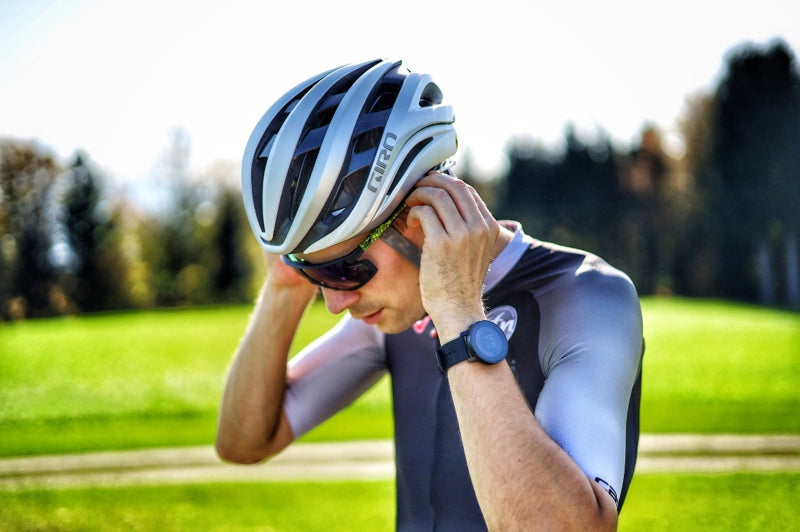
Learn how augmented reality can empower your performance now
Suunto athlete and outdoor sports junky Gregor Strasser has been using ActiveLook-powered Julbo smart glasses with his Suunto for a few months, but is already liking what he’s seeing. He’s been testing them in the mountains above Salzburg in Austria and loves the way the most important performance data is always right there, displayed on a lens.
“I’m a technology freak and hoped they would make my everyday training easier,” Gregor says. “Of course, you have to get used to the new field of view, but once everything is perfectly adjusted, you can hardly imagine it any other way.”
Focus on what matters
ActiveLook is a division of Microoled, the second largest micro OLED supplier in the world. ActiveLook produces an embedded head-up display technology that fits into sleek, lightweight frames and lenses. Marketing & partnerships director of ActiveLook, Xavier Bonjour believes smart glasses are going to revolutionize outdoor sports.
“When you have the data displayed in your field of vision, you can better manage your effort and no longer need to look at your watch anymore,” he says. “We’ve tested our technology with athletes at the Copenhagen, Boston and Paris marathons. All the users beat their personal bests by two to five minutes.”
All Suunto 9 and Suunto 5 watches are compatible
ActiveLook is a display technology used by various sport glass brands such as Engo, Julbo and Cosmo. And now this technology is compatible with the all the Suunto 9 and Suunto 5 watches, including the the new Suunto 9 Peak Pro. It gives Suunto watch owners their key data directly in their field of view, on the inside of their lenses.
“Thanks to the overhead display, you always have the most important training parameters in view,” Gregor says. “Especially in urban areas with a lot of traffic or on rough trails in the mountains, it's great not to be distracted by having to look at my watch or bike computer. This increases safety during the training sessions because you always have everything in view and can fully concentrate. I have never been able to track my performance data in such detail and always stay up-to-date. The glasses give me completely new insights that I didn't have before.”
How the technology works
ActiveLook display technology consists of the following components:
A high-precision micro-projector: the data is projected to the right eye, and the perceived position is between the upper center and upper left. It varies from user to user based on individual morphology, head size, and distance between pupils.
A low power display
Dialog based ”Smart Wearable on Chip”
Custom lens coatings to maximize visual experience
Ambient light and gesture sensors
A battery with up to 12 hours power
A charge connection on the bridge
A high brightness, 304 x 256 pixel, yellow data display
Low power (1mW) thanks to a “memory pixel” that avoids the need for refresh scanning.
Smart sport glasses weigh between 30 and 40g
The miniaturized and invisible augmented reality technology displays essential performance data without obstructing the field of vision. A smart chip integrated into the eyewear projects data to a discrete near-eye display that “melts” into the optics. It gives access in real time to whatever data is monitored by athletes as they train or compete, such as distance, duration, speed, pace, power, or heartbeat.
Train smart and boost motivation
Activelook-powered smart glasses are the perfect gadget for activities when looking at a watch is difficult, such as mountain biking in technical terrain, running hard intervals, or cross-country skiing. The technology displays the essential workout data from the watch, such as heart rate, pace, power as well as turn-by-turn navigation information.
“When you have visual data right in front of you it can be very motivating,” Xavier says. “Like your own personal coach.”
Getting used to them
Xavier says it’s hard to explain how they feel to wear. “It’s a little like wearing a watch or a ring for the first time,” he says. “The first time you put the glasses on it’s a new experience , but once you start moving you forget about them and it becomes natural. When you look ahead, the display disappears - you intuitively learn where to look to see the data. And when you take them off again, you feel something is missing. Like misplacing your smartphone.”
If possible, test them at a shop before you buy, Gregor advises. “Unfortunately, these glasses are not cheap and everything should feel good and fit perfectly.”
How to use with Suunto
After turning on your ActiveLook glasses, simply open the SuuntoPlus ActiveLook sport app in your watch and start your activity. If you don’t have ActiveLook sport app available in your watch yet, go to SuuntoPlus Store in Suunto app and select "Add to watch".
During your activity, the app will send data to the glasses (types of data available varies model to model). When using navigation with waypoints, notifications will be delivered ahead of the waypoint so you don’t miss your turns.
Note: Make sure your Suunto 9 or Suunto 5 watch is updated to the latest software.
Discover ActiveLook-powered sport glasses
ENGO sport glasses
Cosmo Vision sport glasses
Julbo's Evad-1 sport glasses
All images by Gregor Strasser
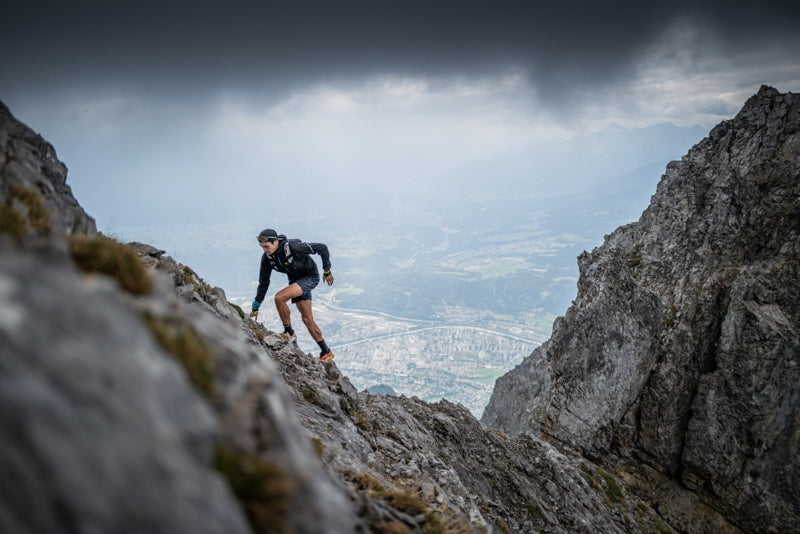
Why navigating with a Suunto has never been better
GPS is just one of many. It stands for Global Positioning System and is a US based global navigation satellite system (GNSS). There are four other GNSS and counting. With more of them connecting to your navigation device you’ll get better accuracy, more often, than with one only. That’s because it’s more likely a satellite will be directly above your position and able to send and receive clear, fast, unobstructed signals.
How GNSS work
It almost seems like science fiction: hundreds of satellites in orbit around the planet sending and receiving signals from billions of devices. But how does it all work?
A GNSS system is a group of satellites strategically placed in orbit to generate and relay geospatial data via radio signals to connected sensors on the earth – including your Suunto watch. GNSS satellites orbit the planet once every 11 hours, 58 minutes and two seconds. Each satellite transmits coded signals containing the satellite’s precise orbit details and a very stable time stamp from an atomic clock.
GNSS systems have three parts:
Space: the satellites orbiting our planet.
Control: This part includes ground stations located around the equator to control, monitor, track and communicate with all the satellites.
Users: That’s you and your Suunto watch. Or your mobile phone. Your car’s navigation system. The entire IoT! Each device includes a GNSS receiver which comprises an antenna and a processor. The former receives the signal, while the latter decodes it.
Five systems is better than one
With the release of the Suunto 9 Peak Pro, navigating with a Suunto watch and accurately tracking the route of your activity has never been better. The GPS, Galileo, GLONASS, BeiDou and the QZSS global navigation satellite systems all work with the new sleek and versatile watch. Moreover, the watch’s navigation system is controlled by a new Sony chip that requires less power, resulting in less drain on the battery.
“The increased number of visible satellites that can be utilized simultaneously will improve the likelihood your watch positions you accurately,” says Markus Kemetter, product manager at Suunto. “This is especially the case when you’re in areas with obstacles, such as a city with skyscrapers or between steep mountains where part of the sky is blocked. “In addition to being more accurate, the Suunto 9 Peak Pro’s navigation system consumes less power giving the user longer battery life.”
“Another super important thing affecting your tracking accuracy is the assistant data coming from Suunto app every time you sync,” Markus continues. “Keeping that up to date is crucial for accuracy – so sync regularly.”
They work together by default
With all those satellites orbiting the planet and connecting to your watch, it doesn’t matter whether you’re running in Manhattan or mountaineering in the Himalayas. You can count on the best accuracy of any Suunto device we’ve ever made. And there’s no need to fiddle with the settings to make any selections.
In the Suunto 9 Peak Pro all five GNSS are simultaneously active by default. You don't need to do anything"
Change your navigation settings to extend your battery life
You can change the Suunto 9 Peak Pro’s navigation settings to extend its battery life.
Performance mode
This is the setting for optimal accuracy. In Performance modem, the Suunto 9 Peak Pro’s battery can last for 40 hours before requiring a charge.
Endurance mode
Selecting Endurance mode in your Suunto 9 Peak Pro puts the watch’s navigation chip into “duty cycle mode” – it sleeps half a second and switches on for half a second to get a fix. This extends the battery life and provides a less accurate, but still reliable track. The accuracy will, however, become poorer in more difficult terrain.
Tour mode
In this mode, the watch’s battery can last up to 300 hours. The mode extends the battery life by having the navigation chip on for 1–2 minutes every 30 minutes. This reduces the accuracy and is usually used by people who are traveling light and fast, can't regularly access a charge and don’t want to carry a battery pack with them.
Lead image: © Philipp Reiter
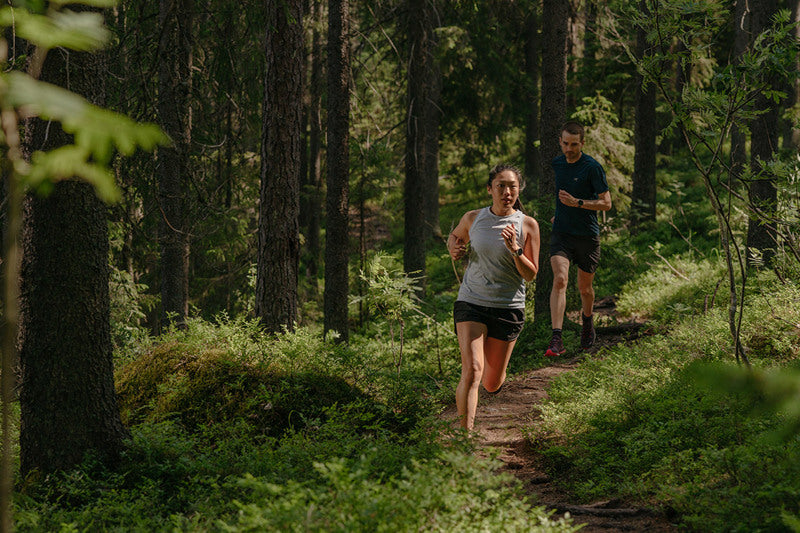
Plan your interval workouts with Suunto app
Complex training sessions just got a bit easier – at least to plan and follow. The rest is up to you and your coach!
You can build structured workouts in Suunto app. This is especially useful with complex sessions, like intervals. Use Suunto app to build the workout step by step from warm-up to cool-down. You can find the Workout builder under the Watch section in Suunto app.
When starting to create a new workout you can set a target date for it or save it in your app’s workout library. If you have set a target date, your watch will suggest the right workout on the right day.
Your workouts can be based on distance, duration, lap button press or a mix of them. You can, for example, have a warm-up that ends with a lap button press followed by 1 km intervals with a five minute recovery. The target intensity for your workout can be based on heart rate, power, pace or speed.
Created workouts are synced as SuuntoPlus guides to your watch. Select the correct workout guide before starting the exercise. So, select the activity type and before hitting ‘Start’ go down to Options > Suunto Plus > Guides and you will see your planned session there. Select that one and go.
During the exercise SuuntoPlus will notify you about upcoming steps in your workout and provide real-time guidance for your interval training. Happy training!
NOTE: You can also sync structured workouts to your Suunto from our partner services, like TrainingPeaks. Learn more about SuuntoPlus here.
Learn more about building structured workouts with Suunto app
Learn more about training zones
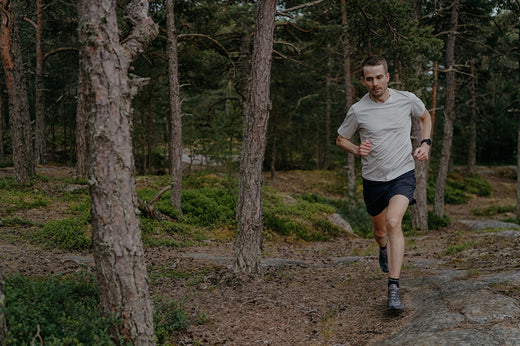
Run with power
Working out at the right intensity is the key to systematic and effective training. To get the benefits, you first need to set up your intensity zones. With Suunto watches you can set up running specific intensity zones based on all three; heart rate, pace and running power. Adjust your intensity zones at Settings > Training > Intensity zones > Advanced zones.
Running power is very useful during ups and downs as it takes into account elevation gain and this way helps you maintain a steady effort in changing terrain. It is also valuable for interval sessions as it reacts quicker than heart rate to changes in intensity.
Suunto 9 Peak Pro measures running power from the wrist combining GPS and barometric data. Ensure your weight is correct in the watch settings for the algorithm to work properly. Your weight is set at Settings > General > Personal > Weight.
Use a sport mode with power – or create your own
To see your power during your run, select a sport mode that shows running power on your screen. You can use for example sport modes like Trail running power or Running power.
This is how power – 265W in this case – is shown in the default Trail running power sport mode. You can also use the Running power sport mode – or customize your own with Suunto app.
Running power is one of the data fields you can add in your custom sport modes. You can select data like current power (Power 3 sec, Power 10 sec, Power 30 sec), average power and max power. You can also select to see Lap average power, Lap max power and Interval average power on your custom screens.
After the run you can analyze your power in Suunto app.
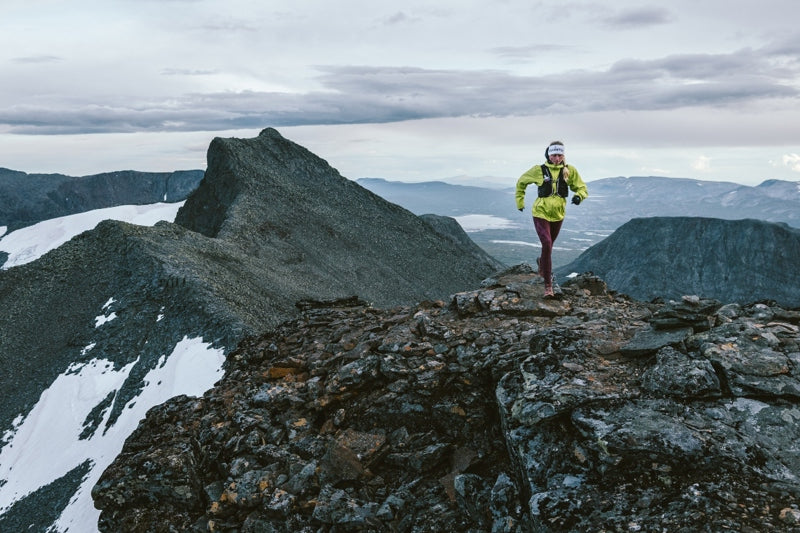
Turn it all off and come back to the present moment
Living just below the Arctic Circle in 2021 during the coronavirus pandemic Freya Orban, from southern Sweden, was missing sunshine and isolated due to social distancing restrictions.
Unable to do the things she loved — train with her cross-country skiing team, go trail running or to the gym to train — she became depressed. All the signs of stress and strain were showing, and then her dog died.
“That was the trigger for everything,” the 25 year Suunto athlete says. “Then I got shingles and couldn't get out of bed for a month.”
Piling on the pressure
At the worst low of her life, Freya started to question everything she was doing. Reflecting in this way allowed her to see what is important in her life, and what is superfluous. Like with so many competitive athletes, she used to pile too much pressure on herself. Going to races, managing her social media accounts, pleasing sponsors, pursuing academic excellence — she had become so busy and future-focused she had lost touch with the freedom and joy of running and being outdoors had always given her since she was a child. She had lost her presence. The simplicity of being in the here and now, senses open, taking in the beauty of the world.
Light at the end of the tunnel
Her journey into a dark place and into the light at the other end of the tunnel has led to massive change. She logged out of her social accounts, turned off her smartphone, stopped planning and instead focused on savoring simple presence in the outdoors and growing food in her garden. The sound of wolves howling in the distance (that’s Sweden!), the taste of wild blueberries, the feeling of wind on her face. Coming back to moment by moment experience, Freya healed herself and is now in the best place ever.
Leaving it all behind and running hut to hut
Watch the short film Presence below and follow Freya and her friend and photographer Lukas Dürnegger as they go on a fast packing hut to hut trip in the mountains of Jämtland in central Sweden. Over six days they ran 155 km with 5242 m of elevation gain. They left their smartphones at home and really tuned into the living world around them. Along the way they took time to stop a lot and ate handfuls of juicy blueberries and cloudberries.
Freya’s 3 tips to find presence
Rethink how you use social media
Freya’s approach to social media has changed. During some periods, she might sign in only once a month. And she posts only what she wants to look back on in a few years. It’s about keeping magical memories, not about sponsor-collaborations or gaining followers. Freya says being busy with screens and social media can make our senses dull and tuned out.
Pay attention to the little things
“A lot of people are caught in hamster wheels,” Freya says. “We go to work and tick off boxes on our to-do lists. But by the end of the day we can’t even remember what was happening. We rush through everything and miss things.”
To reverse this condition, Freya suggests going out into nature and opening up all the senses. “Try to use all your senses,” she says. “Not just your vision. Use your hearing, sense of smell, even taste, touch — the raindrops on your forehead. Everything you encounter out there, really try to feel it.”
Leave the tech at home
Once a week, leave all your technology at home and go out into nature for a run or a hike. Leave your earbuds, smartphone, GPS sports watch at home and be in the here and now. “Make it about being in nature and running for the joy of it,” Freya says.
All images by Lukas Dürnegger














































































